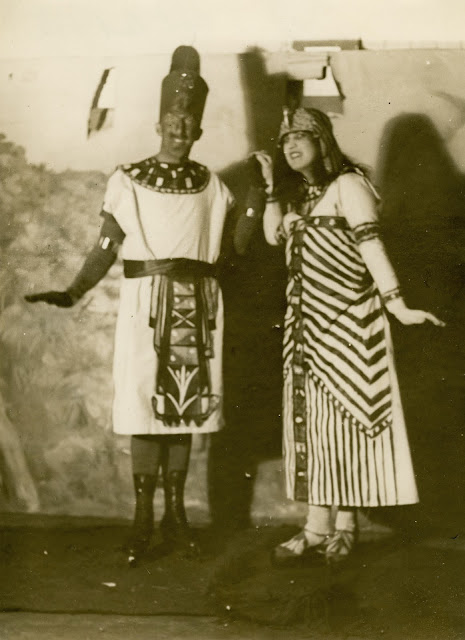"Music and medicine are both divine disciplines. You're dealing with the human body, which is a divine creation, on one hand. And then you're dealing with the divine creation of music. The universe is made of music. Everybody's billions of cells in their bodies - those are vibrations, the vibrations of the solar system, the movement; everything's in a constant flux. And I'm dealing with both of them. They're just very different mediums through which you can see yourself." - Edward Henderson, "Jazz Times", 2001
Born October 26, 1940 in New York City, Edward Henderson (Jackson) was surrounded by music from the day he was born. His mother Vivian was one of The Brown Twins, famous dancers in the original Cotton Club who rubbed shoulders with Louis Armstrong, Duke Ellington and Billie Holliday. His father Eddie was a tenor singer with The Cherioteers, a gospel/pop group who rose to prominence during the Harlem Renaissance, signed with Columbia Records and appeared in "Hellzapoppin'" on Broadway.
Young Edward received his first trumpet lessons at the age of nine from Louis Armstrong himself and also received instruction from the legendary Miles Davis. After his father passed away, his mother remarried to Dr. Herbert Henderson, a wealthy San Francisco physician in June 1955. The family relocated to San Francisco when he was fourteen. While studying at the San Francisco Conservatory of Music as a teenager, he watched a professional ice show and became absolutely taken with figure skating. "I had some athletic ability so I decided to take lessons," he explained in a January 1960 interview with The Associated Press. In a 2001 interview with Bill Milkowski he added, "During the summer I was on the ice at least 10 hours a day, from 5:30 in the morning until the evening. And at the same time I was going to the [San Francisco Conservatory of Music], going to high school, playing basketball, too."
The talented teenager competed in both the Pacific Coast and Midwestern Championships in the late fifties and early sixties, undaunted by the very real colour barrier that existed in the skating world at the time. Enlisting in the U.S. Air Force during the Vietnam War period, he relocated to Colorado and was permitted entrance in the Denver Figure Skating Club, which he represented at the 1960 Midwestern Figure Skating Championships in Minneapolis. He placed sixth out of seven competitors in the school figures at that event, but made a considerable impression with his fine free skating and moved up to win the bronze.
In 1960, Edward expressed, "Amateur figure skating isn't a sport you can go into without money. Negroes as a group are not very wealthy, and I doubt whether many Negro athletes have had the opportunity that I've had in this sport, that is both the interest in it and the means... I never felt any special nervousness as the first of my race performing in this sport. I am grateful I've got the chance to lead the way. That's one of the reasons I'd like to stay in it for a while." After his stint as an airman ended in 1961 - the same year as the fateful Sabena Crash that took the lives of the entire U.S. figure skating team - Edward ultimately opted to leave the ice behind five years before the USFSA changed its by-laws to take a stand on racial prejudice within skating clubs to pursue joint careers in music and medicine. He passed the barrier breaking torch on to incredibly talented skaters of colour like Atoy Wilson, Joan Campbell, Reggie Stanley, Michelle McCladdie and Richard Ewell III, Bobby Beauchamp, Rory Flack Burghart and Debi Thomas.
Edward studied zoology and medicine at the University of California at Berkeley in 1964 and got his M.D. at Howard University in 1968, but didn't start practicing medicine until the early seventies, instead choosing to devote much of his time energy to music. He performed with Herbie Hancock's Mwandishi band, Pharoah Sanders, McCoy Tyner, Slide Hampton and Elvin Jones. He also endorsed Selmer trumpets and toured Great Britain. In the years since he hung up his skates, he's produced albums under Capricorn Records, Columbia, Blue Note, Steeplechase Records and Smoke Records and served as a faculty member at the Juilliard School of Music and Oberlin University.
Whether on or off the ice, figure skaters are without a doubt some of the most driven, talented people in this world and Edward Henderson's story has to be one of the most fascinating and inspiring success stories out there.
Skate Guard is a blog dedicated to preserving the rich, colourful and fascinating history of figure skating. Over ten years, the blog has featured over a thousand free articles covering all aspects of the sport's history, as well as four compelling in-depth features. To read the latest articles, follow the blog on Facebook, Twitter, Pinterest and YouTube. If you enjoy Skate Guard, please show your support for this archive by ordering a copy of the figure skating reference books "The Almanac of Canadian Figure Skating", "Technical Merit: A History of Figure Skating Jumps" and "A Bibliography of Figure Skating": https://skateguard1.blogspot.com/p/buy-book.html.



































